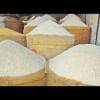Global food prices drop 13.7% in 2023: FAO

World food prices fell in 2023, with considerable declines for grains and oils as supply concerns eased, the UN's Food and Agriculture Organization said Friday.
Overall, world food commodity prices fell 13.7 percent in 2023 against the previous year, Rome-based FAO said.
The FAO's cereals price index fell 15.4 percent, "reflecting well supplied global markets" compared to 2022, when prices soared after Russia's invasion of Ukraine, a major grain exporter.
While supply concerns eased for wheat and maize, the opposite was true for rice due to the impact of the El Nino weather phenomenon and India restricting exports. Rice prices jumped 21 percent last year.
The vegetable oil price index posted the biggest fall last year, dropping 32.7 percent, thanks to improved supplies and reduced use for biofuel production.
Sugar prices, on the other contrary, jumped 26.7 percent overall, though they retreated from their highs in December thanks to Brazil stepping up exports and reduced use for biofuels.
While the FAO's overall index dropped, consumer food prices in many countries are rising, often faster than the overall inflation rate.
"The fact that food commodity prices drop doesn't necessarily mean a drop in food prices," noted economist and food industry specialist Bruno Parmentier.
The FAO index measures commodity market prices, and it can take a while for these to filter through to supermarket shelves. They represent only a fraction of the cost of processed final products.
"Flour only represents four to eight percent of the price of a baguette," said Parmentier. "Most of it is the cost of labour and production costs" such as energy, water and rent, he added.

 For all latest news, follow The Daily Star's Google News channel.
For all latest news, follow The Daily Star's Google News channel. 








Comments